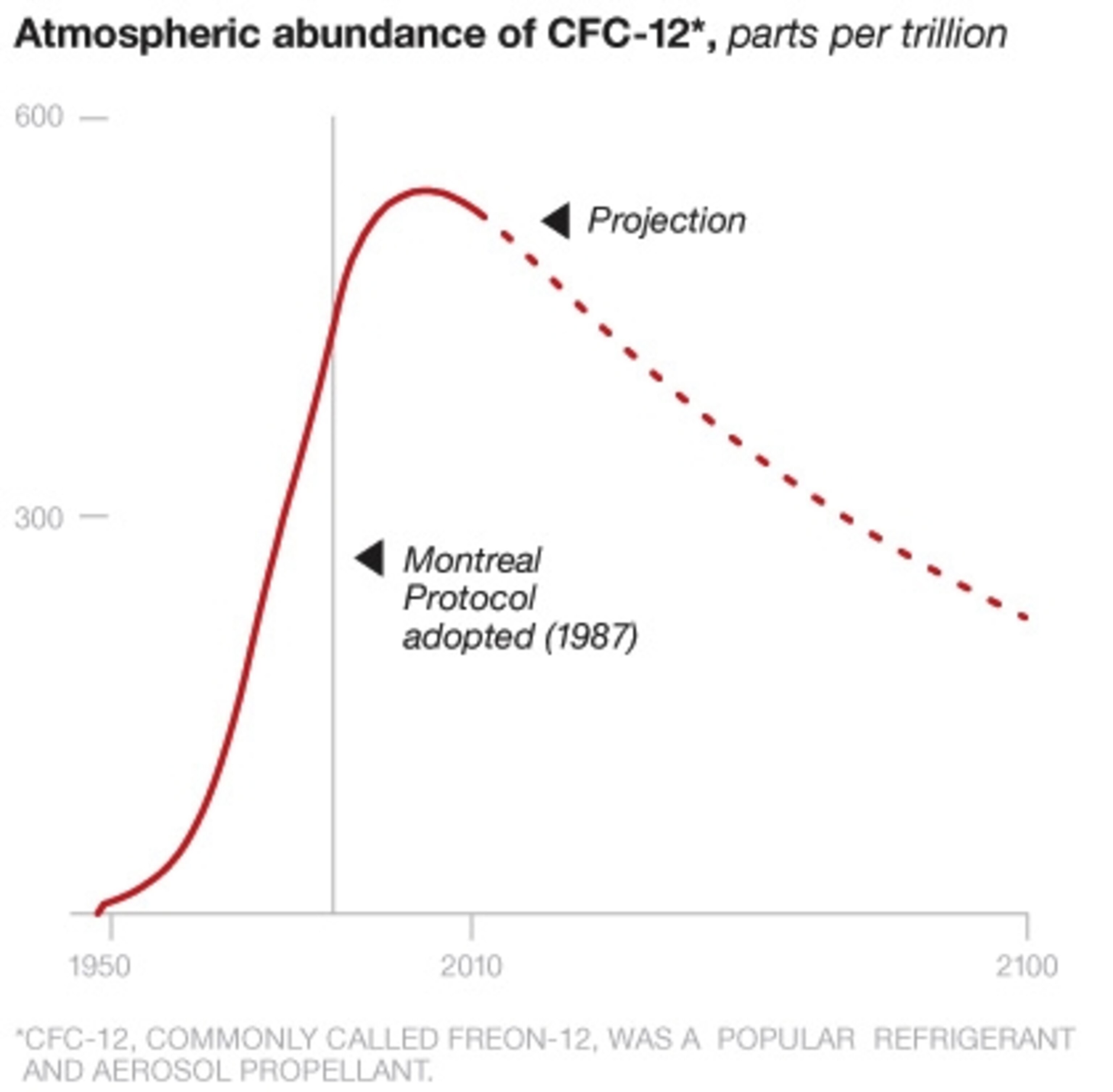
Healing the Ozone Layer: Chemist Says Treaty Is Working
The Montreal Protocol, enacted in 1987, put controls on use of aerosol CFCs.
“The Montreal Protocol is working,” says chemist Mario Molina, who shared the Nobel Prize for his work on the effects of chlorofluorocarbons (CFCs). “CFCs are a global environmental problem that is being solved by society.”
The international treaty, which opened for signature in 1987, created controls on the use of CFCs, gases used as coolants in refrigerators and to propel aerosols like hair spray out of cans. The problem was that CFCs spread out in the stratosphere, where they led to a hole in the ozone layer.
(One overlooked way to fight climate change? Dispose of old CFCs.)
When Molina started studying CFCs in the 1970s and discovered their role in ozone depletion, each U.S. household averaged 30 to 40 spray cans. Since the late ’90s, CFC production has all but stopped, making modern spray cans ozone safe.
The ozone layer itself? Though scientists say it will take until beyond 2050 to return to pre-1980s levels of CFCs—they take about a hundred years to decompose—the amounts in the atmosphere are steadily decreasing. (See chart below.)





